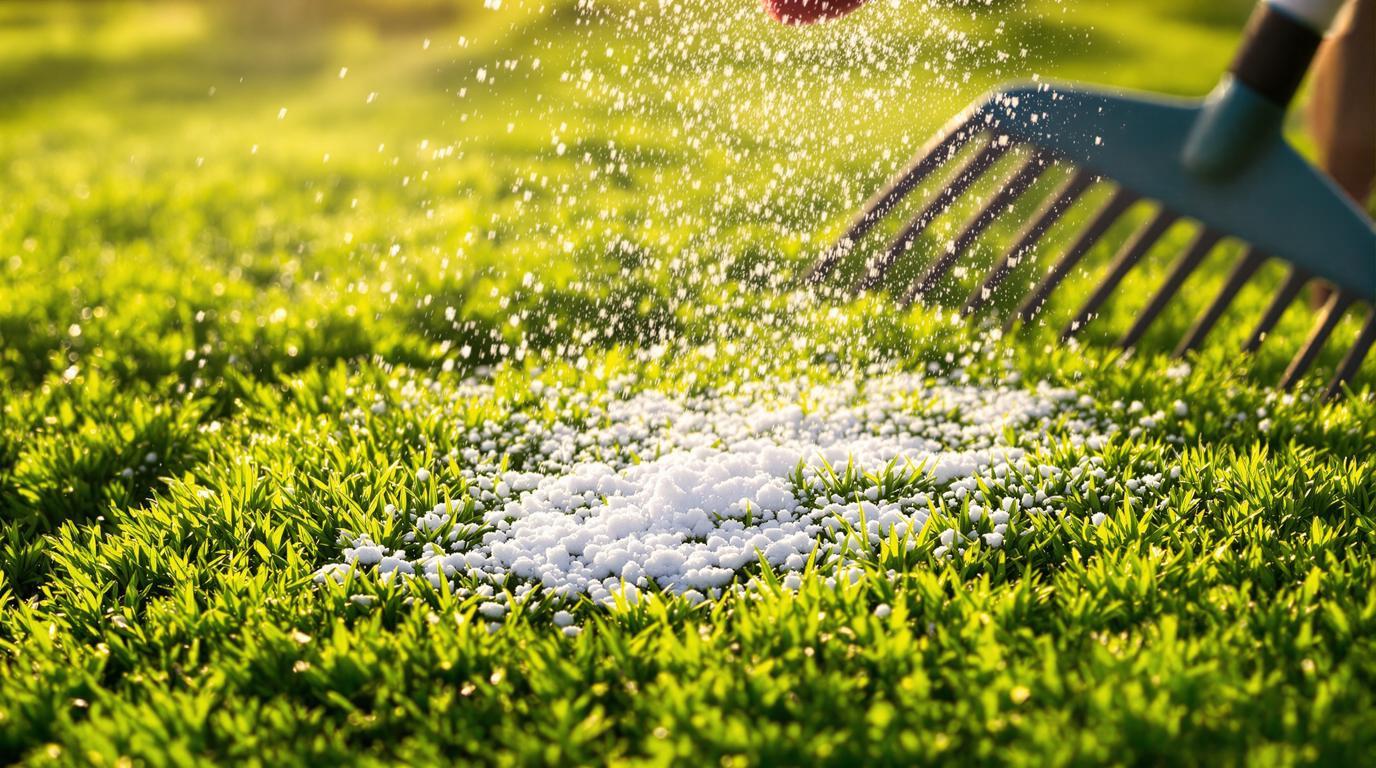Most homeowners dread the sight of it—that velvety green carpet slowly conquering their lawns. Moss might seem harmless, but this resilient plant can quickly transform your carefully maintained turf into a patchy, slippery mess. While some gardening challenges require complex solutions, defeating moss is surprisingly straightforward when you understand the science behind it.
Why moss thrives where grass struggles
Moss isn’t actually killing your grass—it’s simply filling in where grass can’t survive. Unlike traditional turf, moss thrives in acidic soil with poor drainage and minimal sunlight. When these conditions exist, moss seizes the opportunity, establishing itself in areas where grass struggles to grow. This opportunistic nature makes it particularly common in the Pacific Northwest and other regions with significant rainfall.
The iron secret professional landscapers don’t advertise
The most effective weapon against moss isn’t an expensive chemical treatment—it’s iron. Products containing ferrous sulfate dehydrate moss without harming grass, turning it black within 24-48 hours. As one landscape professional explained:
“Iron-based treatments are our go-to solution because they target moss specifically while actually benefiting the surrounding grass. Your lawn gets greener while the moss dies off—it’s a win-win.”
Apply in early spring when moss is actively growing for maximum effectiveness.
The pH balancing act your lawn craves
Most homeowners overlook a critical factor in moss control: soil acidity. Testing your soil can reveal if your pH level falls below 5.5, creating ideal conditions for moss growth. Adding lime to raise pH not only discourages moss but creates a more hospitable environment for grass. This approach mirrors techniques used in remote Arctic communities where soil management creates green spaces despite challenging conditions.
The surprising household hack that destroys moss overnight
Your kitchen cabinets hold a powerful moss killer: baking soda. Mix one box with two gallons of water and spray directly onto moss patches. The alkaline solution disrupts moss growth while being environmentally friendly. Similarly, dish soap (5oz Dawn Ultra per gallon) attacks moss cell membranes, causing rapid die-off without harmful chemicals—perfect for yards where pets play.
Light and air: The long-term moss prevention strategy
Addressing moss permanently requires tackling its preferred growing conditions. Strategic pruning of overhanging branches increases sunlight exposure, creating an environment where grass can outcompete moss. This approach resembles techniques used in ancient Egyptian temple complexes where architects manipulated light to create specific effects.
The aeration secret that transforms compacted soil
Compacted soil creates perfect conditions for moss while suffocating grass roots. Using an aerator (or simply a garden fork) to create holes throughout your lawn improves drainage and root development. This approach mirrors techniques used in island ecosystems where soil management preserves delicate balances.
Why your watering schedule might be feeding the problem
Overwatering creates the moist environment moss loves. Instead of daily light watering, switch to 3-4 weekly sessions of ¼-⅓ inch each. As one turf specialist noted:
“Most homeowners unknowingly encourage moss by watering too frequently but not deeply enough. Less frequent, deeper watering encourages grass roots to grow downward, making them more drought-resistant and less susceptible to moss invasion.”
The strategic reseeding approach that creates moss resistance
After removing moss, immediately reseed bare patches with grass varieties suited to your specific conditions. For shady areas, tall fescue varieties offer better resistance to moss encroachment than traditional Kentucky bluegrass. This biodiversity approach mirrors techniques used in Siberian ecosystems where plant diversity creates resilience.
The seasonal timing that maximizes moss control
While spring treatments are effective, implementing a two-season approach delivers superior results. Attacking moss in both spring and fall addresses the problem during peak vulnerability periods. This dual-season strategy should include iron treatments, mechanical removal, and addressing underlying conditions to prevent regrowth after autumn rains begin.
Combining these approaches creates a comprehensive moss management system that doesn’t just temporarily remove the problem but transforms your lawn into an environment where grass naturally outcompetes moss. The result isn’t just a moss-free lawn but a healthier, more robust turf that stands up to regional challenges while requiring less maintenance—proof that sometimes the most effective solutions are also the simplest.
